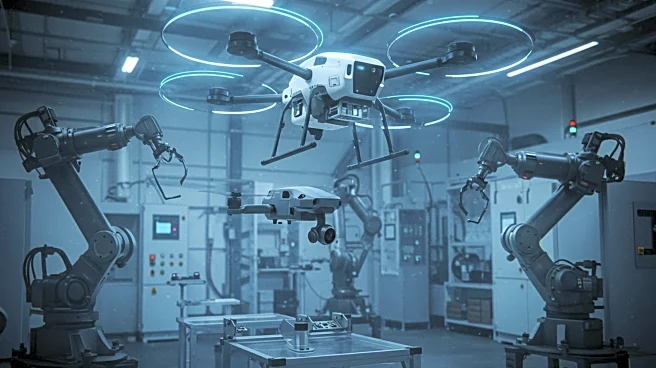What's Happening?
A recent study published in Nature has introduced a model for simulating the 3D quadrangular rotary braiding process, which is crucial for understanding yarn interlacement patterns in fabric production. The study explores the effects of horn-gear and switch movements on yarn interlacement, revealing how different rotation angles and directions can alter the fabric structure. The research utilizes a quadratic B-spline curve to simulate yarn trajectories, providing insights into how yarns interlace under various conditions. This model aims to improve the accuracy of fabric reinforcement in composite materials, offering potential advancements in manufacturing processes.
Why It's Important?
The development of this model is significant for industries relying on composite materials, such as aerospace, automotive, and construction. By understanding and controlling yarn interlacement patterns, manufacturers can enhance the structural integrity and performance of composite materials. This could lead to more durable and lightweight products, reducing material costs and improving efficiency. The ability to simulate and predict fabric structures also opens up possibilities for innovative designs and applications, potentially giving companies a competitive edge in the market.
What's Next?
The study suggests further exploration into novel fabric structures by adjusting movement parameters of horn-gears and switches. This could lead to the creation of new types of reinforced composites with improved properties. Manufacturers may begin to implement these findings into their production processes, potentially leading to collaborations between researchers and industry leaders to refine and apply the model in real-world settings.
Beyond the Headlines
The implications of this research extend beyond immediate industrial applications. It highlights the importance of precision in manufacturing processes and the potential for technological advancements to drive innovation. The study also underscores the role of interdisciplinary research in solving complex engineering challenges, paving the way for future breakthroughs in material science.












